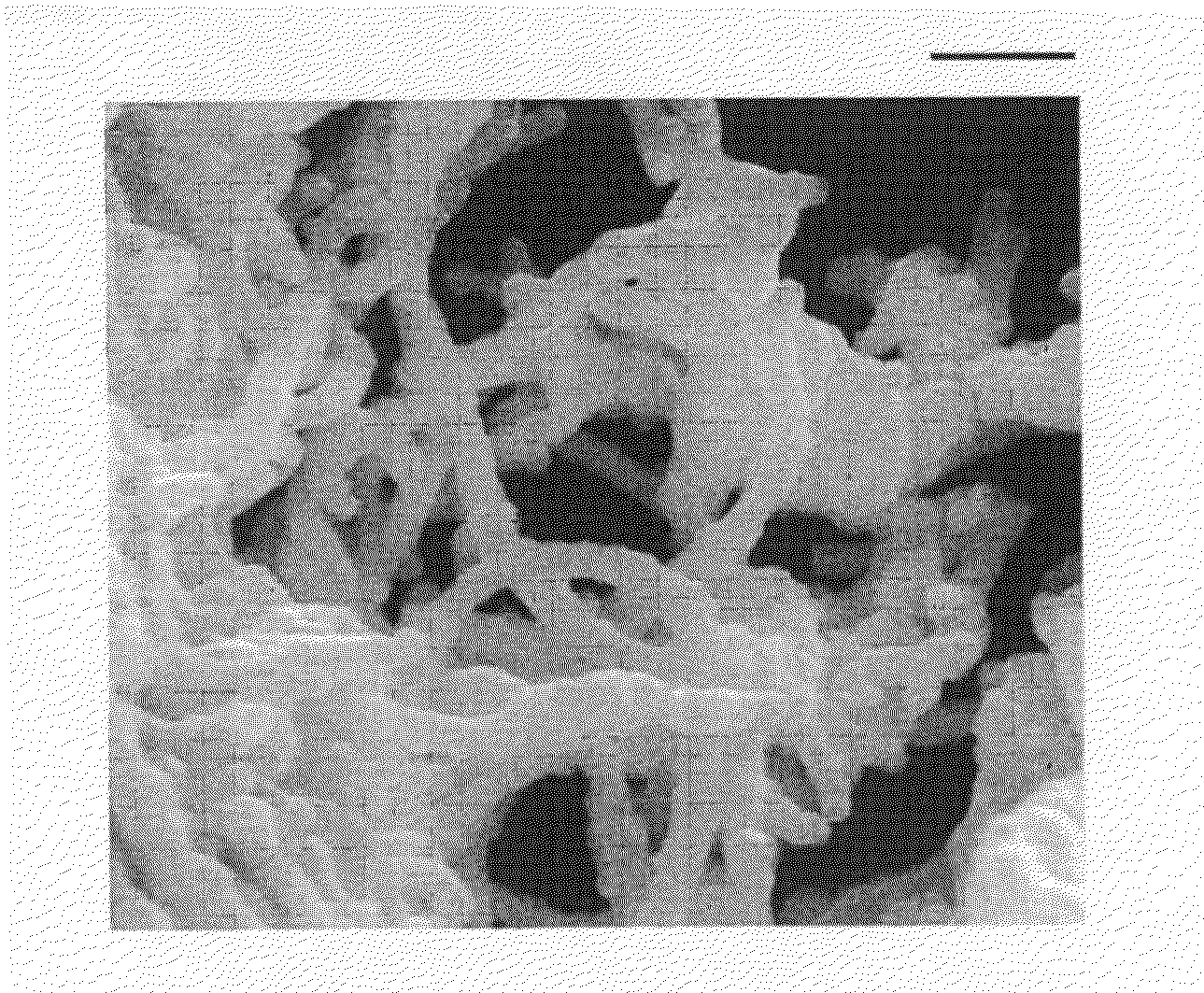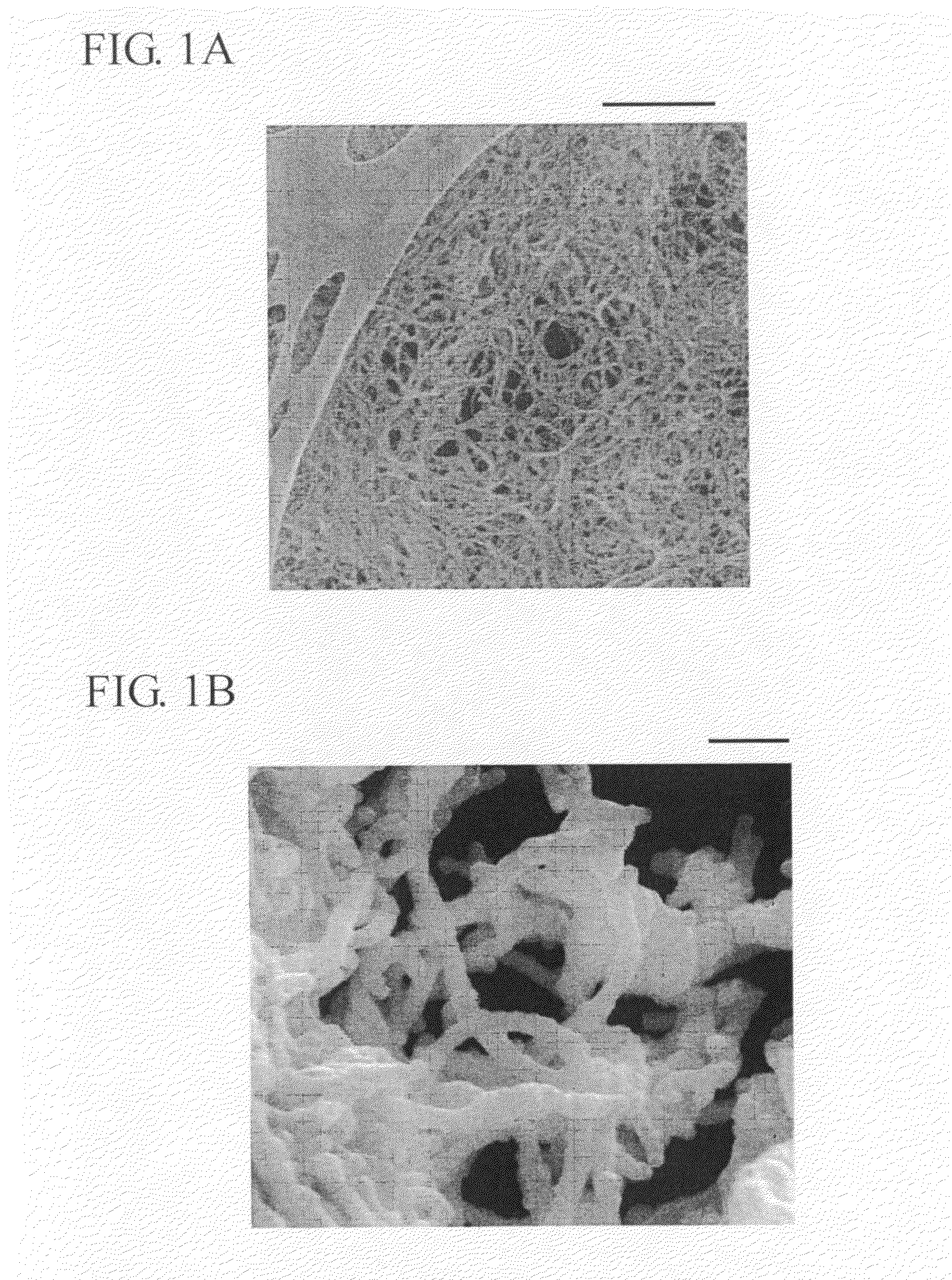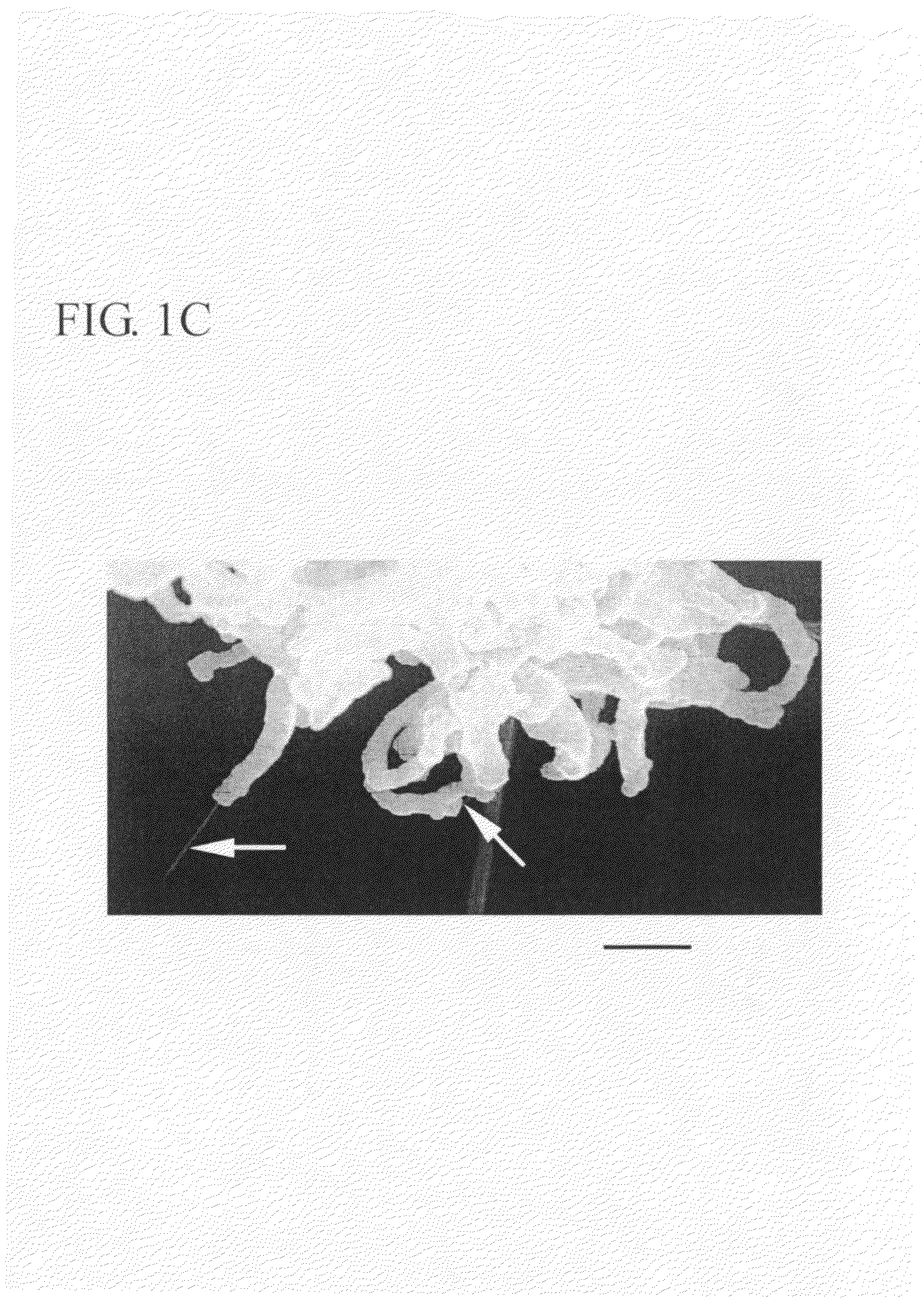Methods for osmylating and ruthenylating single-walled carbon nanotubes
a carbon nanotube and ruthenylation technology, applied in the field of nanotechnology, can solve the problems of inability to apply methods to bulk samples, high carbon solubility of catalyst, and mixture of catalysts
- Summary
- Abstract
- Description
- Claims
- Application Information
AI Technical Summary
Benefits of technology
Problems solved by technology
Method used
Image
Examples
examples
[0085]Synthesis of Osmylated Adducts. Raw SWNTs (HiPco, Carbon Nanotechnologies Inc.) were purified by mild oxidation in wet air followed by treatment with HCl, copious washing with water, and drying at high temperature. (Bahr et al. Chem. Mater. 2001, 13, 3823.) This treatment is able to remove a significant portion (though not all) of the remnant HiPco iron catalyst.
[0086]In the functionalization reaction, 13.5 mg of the purified SWNTs was mixed with a large excess of OsO4 (Aldrich, 184 mg) and dispersed in 10 mL of toluene by brief sonication. Aliquots from this mixture were placed in a quartz cell with a 10 mm path length and irradiated with 254 nm light from a 200 W Hg arc lamp (Oriel instruments). A band-pass filter was used at 254 nm to block out all other wavelengths. Mixtures were irradiated for approximately 2 h with extensive stirring. Workup for the reaction involved filtration over a 0.2 μm PTFE membrane, followed by washing with ample quantities of toluene and methanol...
PUM
| Property | Measurement | Unit |
|---|---|---|
| wavelength | aaaaa | aaaaa |
| diameter | aaaaa | aaaaa |
| wavelength | aaaaa | aaaaa |
Abstract
Description
Claims
Application Information
 Login to View More
Login to View More - R&D
- Intellectual Property
- Life Sciences
- Materials
- Tech Scout
- Unparalleled Data Quality
- Higher Quality Content
- 60% Fewer Hallucinations
Browse by: Latest US Patents, China's latest patents, Technical Efficacy Thesaurus, Application Domain, Technology Topic, Popular Technical Reports.
© 2025 PatSnap. All rights reserved.Legal|Privacy policy|Modern Slavery Act Transparency Statement|Sitemap|About US| Contact US: help@patsnap.com



